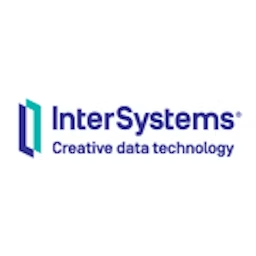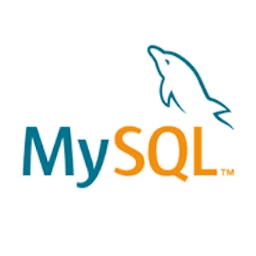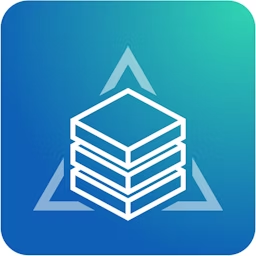Store and manage structured and unstructured data using database software.
Every business has different requirements when it comes to storing big sets of data. That’s why IT professionals require open source database software to create a system based on their specific business needs.
Open source database software helps businesses store and organize structured and unstructured data like any other database software. In addition, it also offers flexibility to modify the source code of the software according to user preferences. Its graphical interface allows you to create and manage data fields and records in rows, columns, documents, etc.
This article highlights the nine best open source database software (sorted alphabetically) based on user ratings and reviews. (Read the complete methodology here.)
Check out the comprehensive list of all database software in Capterra’s software directory.
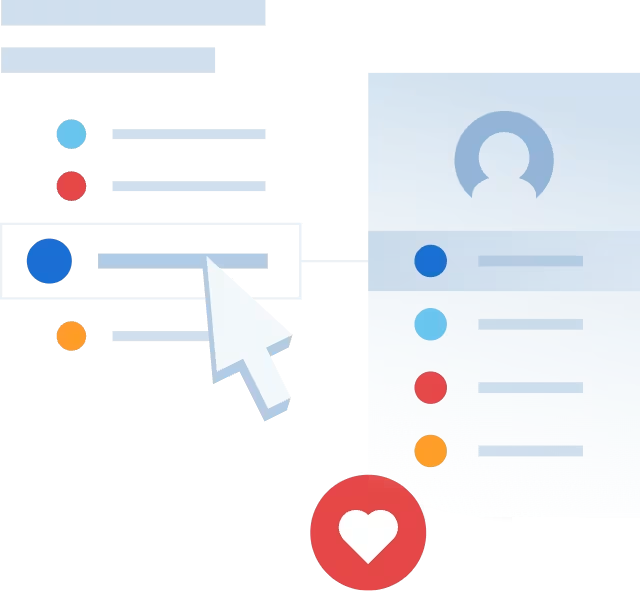

1. DBeaver: Connect to multiple data sources
DBeaver is a database management tool that allows you to choose from a variety of database drivers such as key value, time series, relational, and document, among others. You can analyze, visualize, and transfer data in any format and source with DBeaver. It also allows you to automate tasks by applying scheduling parameters such as frequency, recurrence, and start time.
DBeaver allows you to establish connection types to send commands and receive answers from the database. There are three default connection types, including development, test, and production, which are editable. You can also add new connection types as per your requirements. These connection types can be color-coded to understand which behavior to expect from the database for a certain connection.
DBeaver offers high-level security and supports complex authorization mechanisms such as single sign-on, Kerberos, and multi-factor authentication. To protect your projects, you can create a username and password, which are stored in a JSON file that is encrypted using the AES key.
Key Features
- Data replication
- Database conversion
- Access controls/permissions
- Multiple programming languages supported
- Backup and recovery
- Data migration
Trial/Free Version
- Free Trial
- Free Version
Cost to upgrade
Device compatibility
Screenshots
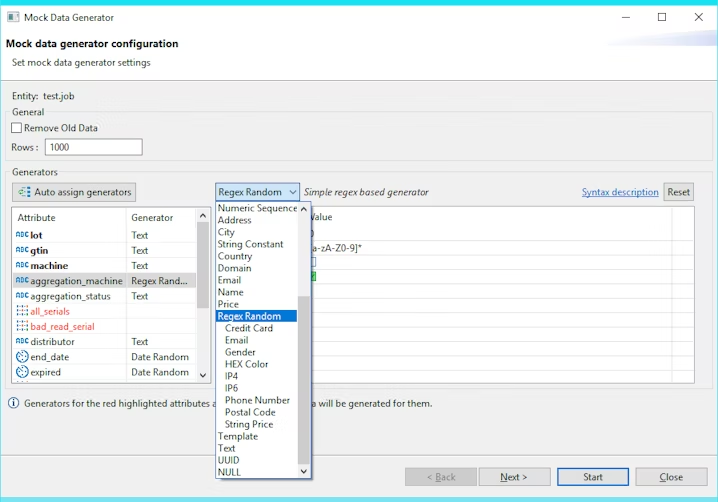
Mock data generator in DBeaver
2. dbForge Studio: Measure and optimize query performance
The database development tool dbForge Studio allows you to create, edit, and run queries along with measuring and optimizing their performance with the query profiler tool. This tool provides detailed statistics on executed queries, forces slow queries, and troubleshoots performance issues.
With dbForge Studio, you can easily design and visualize a database by establishing relationships between tables using the drag-and-drop editor. You can also add key relations between tables without writing complex codes.
The tool allows you to easily backup and restore data with the database backup wizard, which keeps your data safe. For administration, you can monitor user accounts and change and assign privileges using the security manager feature. The security manager allows convenient and easy management of user accounts and their privileges.
Key Features
- Data replication
- Database conversion
- Performance analysis
- Access controls/permissions
- Backup and recovery
- Data migration
Trial/Free Version
- Free Trial
- Free Version
Cost to upgrade
Device compatibility
Screenshots

Database explorer in dbForge Studio
3. Google Cloud Platform: Build apps in a hybrid and multi-cloud environment
Google Cloud offers the flexibility to create, migrate, and optimize apps in hybrid and multi-cloud environments. This helps you avoid being stuck with a vendor when it’s not serving your requirements. With feasibility in choosing environments, you are also served with best-in-class solutions.
The data cloud leverages machine learning and artificial intelligence to get improved insights and automate core business processes. You can also use integrations to ensure the portability and extensibility of the software.
Not only the cloud helps solve business challenges related to data, but it is also a sustainable solution. The tools help you report carbon emissions associated with your usage of Google Cloud.
The cloud platform with its built-in protection and secure-by-design protection architecture secures your information, applications, and identities. The tool encrypts data in transit and at rest while ensuring that it can only be accessed by authorized roles.
Key Features
- Data cleansing
- Data connectors
- Network monitoring
- Performance analysis
- Performance monitoring
- Virtual server
Trial/Free Version
- Free Trial
- Free Version
Cost to upgrade
Device compatibility
Screenshots
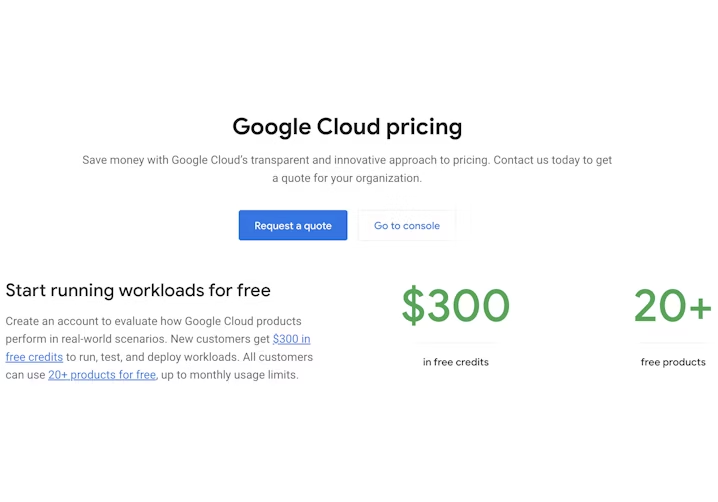
Project information in Google Cloud Platform
4. InterSystems IRIS: Offers interoperability features to share information
InterSystems IRIS is a high-performance database management solution that offers flexible interoperation and integration technology to connect people, applications, and systems. This helps avoid data silos, design, and implement new business processes, and transform data into actionable insights.
InterSystems IRIS is designed for big data applications as it can optimize data for applications that have a high volume of incoming data. The tool is also capable of executing analytics on that incoming data without compromising on performance.
The database software integrates seamlessly with your present infrastructure and the latest technologies to support a wide range of customer requirements. It provides deployment options with many major public and private clouds using a single API so that you don’t have to change your application.
Key Features
- Data conversion
- Virtualization
- NoSQL
- Performance analysis
- Data migration
- Data replication
Trial/Free Version
- Free Trial
- Free Version
Cost to upgrade
Device compatibility
Screenshots
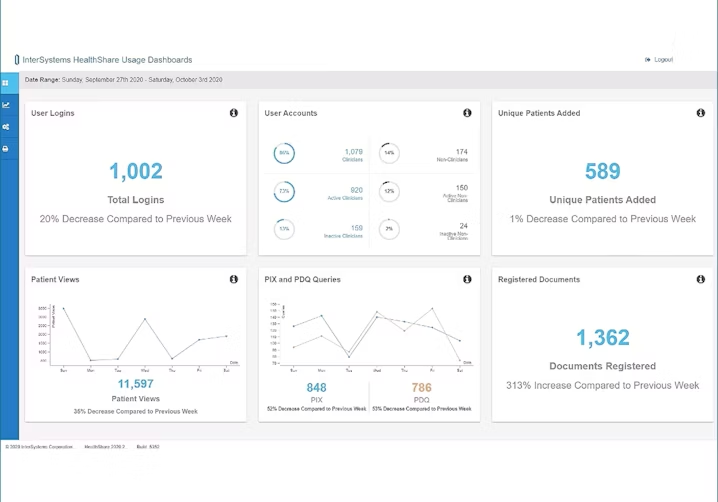
Usage dashboards in InterSystems IRIS
5. MongoDB: Implement ad-hoc queries for real-time analytics
MongoDB is a NoSQL database that enables horizontal scaling and load balancing, which allows network load to be efficiently spread across multiple servers. The database software enables you to execute ad-hoc queries whose value depends upon variables. The document-oriented database allows developers to update ad-hoc queries in real time, which improves the performance of your application.
MongoDB offers a wide range of indices and language-specific sort orders that allows you to easily access and scan documents for related queries. You can create on-demand indices to manage real-time query patterns and application requirements.
The fully managed service tool enables auto-scaling, serverless instances, full-text searches, and data distribution across regions. You can run applications with an object-oriented data model and work offline.
Key Features
- Data visualization
- Data warehousing
- Database conversion
- High volume processing
- Backup and recovery
- Data migration
Trial/Free Version
- Free Trial
- Free Version
Cost to upgrade
Device compatibility
Screenshots
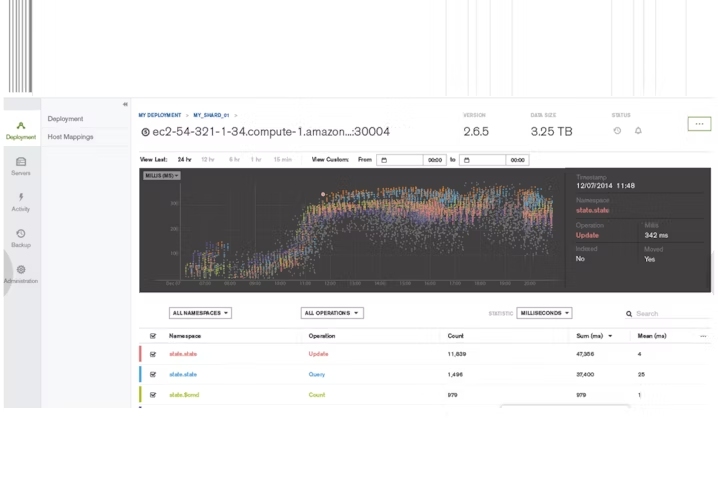
Deployment in MongoDB
6. MySQL: Comprehensive support for application development needs
MySQL is a relational database management software, which means it stores data in different tables. The highly scalable tool supports large databases that have as many as 50 million records. MySQL is compatible with many operating systems such as Windows, Linux, Solaris, Unix, and Netware, among others.
MySQL offers a storage engine framework that enables high-performance websites. If you need a website that runs a million queries or requires high-speed transactional processing, MySQL is capable of meeting your expectations. The software allows high speed, unique caches, full-text indexes, and other performance-enhancing features.
As security is a requirement for all businesses, MySQL aims to offer features that ensure absolute data protection. There is a flexible and secure privilege and password system to access the database and it enables host-based verification. Only authorized users can access your database and you can also block users from viewing data. MySQL offers password security by encryption of all password traffic so that it becomes unreadable to hackers.
Key Features
- Access controls/permissions
- Backup and recovery
- Data migration
- Data replication
- Relational
Trial/Free Version
- Free Trial
- Free Version
Cost to upgrade
Device compatibility
Screenshots
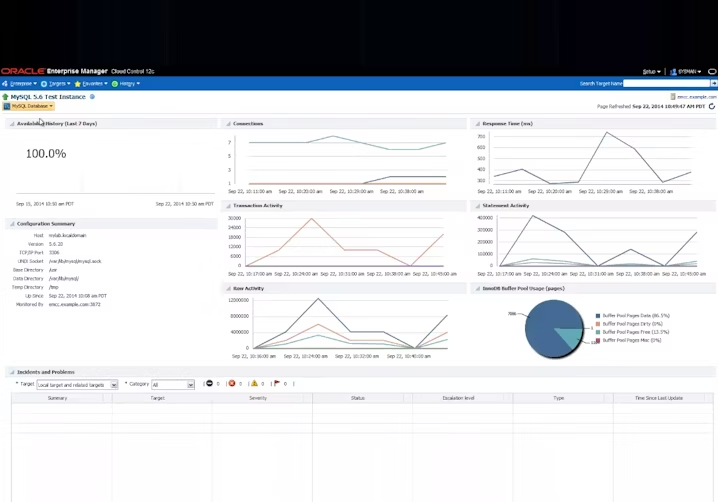
7. Oracle Database: Uses machine learning to automate database management tasks
Oracle Database is an autonomous database that leverages machine learning capabilities to automate database tuning, patching, security, and other database management tasks. By handling tasks performed by database administrators (DBAs), Oracle Database helps avoid human errors that can have an impact on uptime, performance, and security.
Oracle cloud infrastructure (OCI) services include security features such as a security console to check alerts, cloud services, and APIs for securing applications. The security mechanisms involve protecting the scaled-out OCI, maintaining the physical security of hardware, securing architecture patterns for distributed systems, and limited access to users.
The cloud database consolidates multiple databases to run on cloud and data center infrastructure, which helps in improving resource utilization and is cost-effective. The converged databases such as Oracle Database also help consolidate different types of workloads on one architecture.
Key Features
- Queries
- Relational
- Virtualization
- Data migration
- Data replication
- OLAP
Trial/Free Version
- Free Trial
- Free Version
Cost to upgrade
Device compatibility
Screenshots
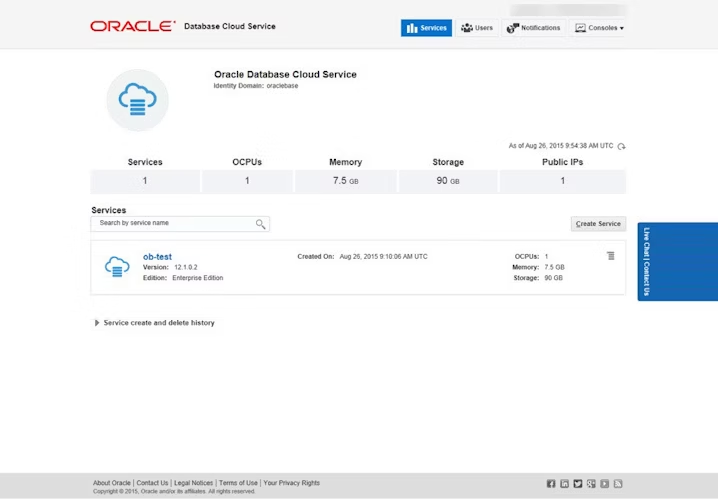
Cloud services in Oracle database
8. Percona Server: Helps prevent outages and improve mean time to repair
Percona Server is an open source database that allows organizations to maintain business agility and minimize risks with its multi-vendor environment. Percona Server is a flexible solution that eliminates the risk of vendor lock-in and helps you optimize the solutions that you already have.
Percona experts and tools help uncover bottlenecks and slowdowns across multiple databases. With the performance audit, you can analyze the issues your database is facing and the software helps fix slowdowns.
As Percona Server is completely free, it is a cost-effective solution and its customizable features enable you to meet your business goals while allowing you to stay agile.
Key Features
- Backup and recovery
- Data replication
- Multiple programming languages supported
- Relational
Trial/Free Version
- Free Trial
- Free Version
Cost to upgrade
Device compatibility
Screenshots
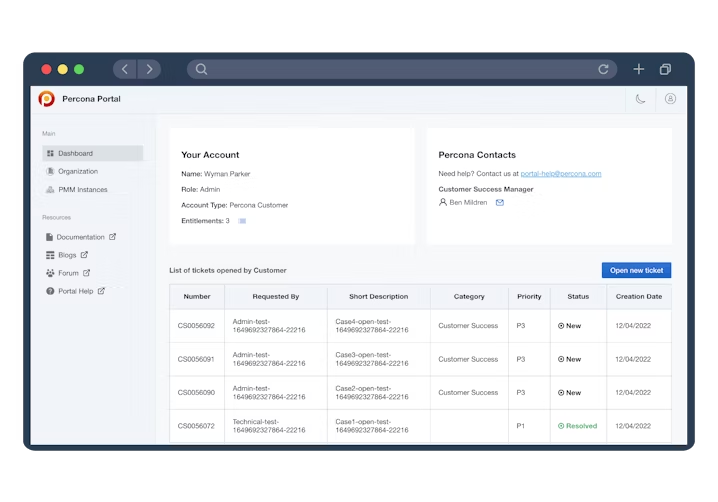
9. PostgreSQL: Object-relational database system
PostgreSQL is an open source object-relational database system that has an edge over other relational databases as the software supports user-defined objects and their behaviors including operators, data types, domains, and indexes. This makes the database software more flexible and robust.
PostgreSQL is also capable of supporting an extensive list of data types and structures such as UUID, geometric, binary, text search, and bit string, among others. You can also use the ‘create type’ command to create a new type of database if you have specific requirements.
The database management system is atomicity, consistency, isolation, and durability (ACID) compliant, which ensures the completion of database transactions in a timely manner. With primary keys, restricting and cascading foreign keys, and other data integrity features, the database tool allows only validated data to be stored.
Key Features
- Database conversion
- Monitoring
- Multiple programming languages supported
- NoSQL
- OLAP
- Performance analysis
Trial/Free Version
- Free Trial
- Free Version
Cost to upgrade
Device compatibility
Screenshots
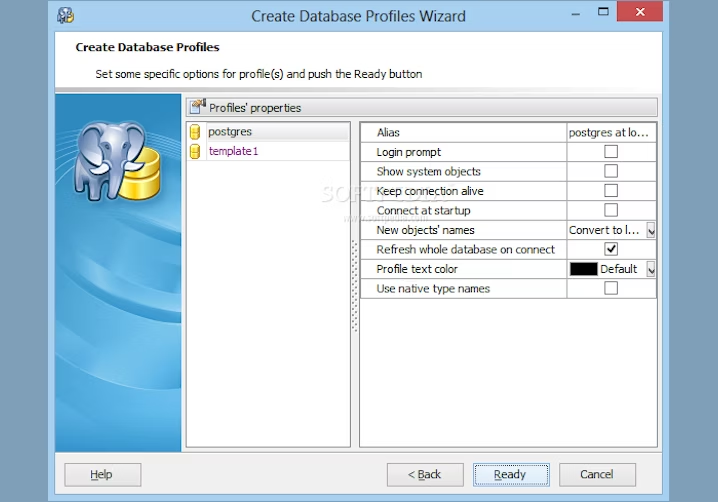
Create database profiles in PostgreSQL
How to choose the right open source database software for your business
When looking for an open source database software option for your business, keep these considerations in mind:
Know your workload: Workload in a database means a set of requirements, such as performance expectations, query types, and other business requirements, you want to achieve from a database. Many database software solutions claim to wear many hats such as the NoSQL database, which is fit for horizontal scaling and allows you to execute transactional queries, or relational databases, which provide a data analytics warehouse. This could be true to a certain extent but it does not mean these databases excel in providing these additional features. Therefore, it is crucial to understand your business requirements and then choose the software that best serves your purpose.
Usability of the tool: The database software will not only be used by IT professionals but it could also be used by staff members from other verticals such as marketing or human resources. It’s recommended that you look for intuitive software that is suitable for all your employees. To ensure the ease of use of the software, check its graphical interface and consult team members from other departments about its usage.
Look for security: When choosing a database management system, it’s important you check the security features included in the terms and conditions of the software. Your company’s data is an important asset that you cannot afford to lose. Therefore, you must check how the vendor addresses the issue of security.
Common questions to ask while selecting open source database software
These are some of the questions that you can ask vendors to select the best open source database software:
What resources are available to help you get started with your database software?
It’s not every day you select or change your database. That’s why it’s crucial to ask all the important questions before getting started with the software. You need to know the types of resources a vendor provides to help you integrate the software into your current stack. This could include documentation, developer zone, forums, blog, installation guides, tutorials, etc.
Does the software offer an option to report bugs?
Database software is an important part of your business and issues in the software can lead to downtime and performance issues. Therefore, when you face any issue with the software you should be able to communicate with the vendor and file a bug report. Before selecting a database tool, check if the vendor offers a platform to report bugs.
What kind of technical support does the vendor offer?
Generally, in the open source version of the software, vendors offer commercial or community support, and premium support is reserved for paid users. Within the community support, you need to check how active the community of the software is and the turnaround time for dealing with issues.
How did we choose these products? We didn’t—you did
To find your ideal software match, you need information you can trust—so you can save time, stay on budget, and focus more energy on growing your business. It’s why we vet and verify all our user reviews and recommend only the tools endorsed by people like you.
In other words, our product recommendations are never bought or sold, or based on the opinion of a single individual—they’re chosen by your peers, reflecting the views and experiences of our independent base of software reviewers.



